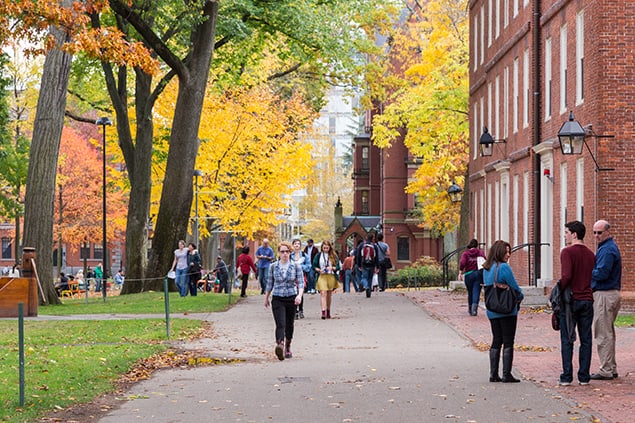Fitting In at a U.S. University
Tuesday | February 6, 2018 | by Jessica Sandberg

Sweaty palms. Jittery limbs. Bouts of insomnia. Pangs of doubt. These come, literally, with the territory.
The decision to study abroad, regardless of the destination, comes with some anxiety. You may have been dreaming about studying in the U.S. your whole life. Or the idea could be quite new. Either way, your choice is probably firmly rooted in data and a careful assessment of the U.S. system of higher education. You know you will be making a wise investment in your future.
Nevertheless, you are bound to second-guess your decision before you take the final step. Will you make friends? Will you fit in? Will you be comfortable in this new place?
A Land of Difference
One of my favorite questions to ask international students shortly after they arrive in the U.S. is: “What surprised you?” A common answer I receive to this question is, “I was surprised by how easily I blended in.” This is not to say that students do not experience culture shock when they navigate the subtleties of social and academic norms.
The environment in the U.S. is eclectic. International students do not feel like they stand out because there is no universal appearance here.
For students coming from homogeneous cultures with deep historical roots, the U.S. may feel young and diverse by comparison. In fact, diversity is part of the American identity. Originally inhabited by Native American Indians, the country was subsequently populated by immigrants from around the world. We affectionately refer to this blend of cultures as “the melting pot.”
Therefore, it is short-sighted to look only at a school’s international student enrollment figures to determine how well you will fit in. Enrollment data often overlooks the many internal and external influences at work in a typical American university. In fact, international students are only one category of the foreign-born population. On most campuses, you will find a thriving immigrant community of students and faculty. These individuals may own a U.S. passport, but were born outside the country and often speak a second language. There is also a growing population of “global nomads” who have blended backgrounds and do not easily fit into one cultural identity. They may have dual citizenship, speak multiple languages, and have lived in more than one country. We should also consider the many American students and professors who participate in international exchange programs and return with a broader worldview that influences their daily work.
Finally, do not forget to look at our surrounding communities. Consider race, religion, and native language. There is great variety in American towns and cities. Take Philadelphia, for example. According to the 2016 census, the city’s residents are 44% Black, 44% White, 14% Hispanic, and 7% Asian. It is no wonder that international students are able to blend in so easily.
#YouAreWelcomeHere, Truly
Need more evidence that universities in the U.S. are excited to have you on their campuses? Grab a cup of coffee (or tea!), find a comfortable chair, and start a search on the hashtag #YouAreWelcomeHere. You will find hundreds of heartfelt videos created by schools all across the U.S. This viral higher education campaign was designed to create an atmosphere of welcome and excitement for students like you and it highlights the vital role international students play in our communities. Many Americans will not have the chance to travel and, therefore, international students bring an international perspective to their daily life and studies.
More than just a hashtag, the campaign also reflects the robust social and academic support available on our campuses. Some of these include airport pick-up, orientation services, American buddy programs, and the celebration of international holidays. Universities also provide pronunciation coaching, writing clinics, tutoring, health and emotional counseling services, and career services designed to propel students into a global economy. U.S. universities are well-known for the immersive experience they provide outside the classroom and the lifelong affection they inspire in their graduates.
Taking the Plunge
Living and studying in a foreign country is an adventure. It will undoubtedly be fun and exhilarating. You will see new places, try new foods, adopt exciting new worldviews, and make powerful friendships. But you will also have some discomfort. At times you will feel homesick or lonely. Or you may encounter confusing or disagreeable ways of thinking and behaving.
Overcoming culture shock is part of the learning process and will shape your personal development in myriad ways. Learning to balance the good with the bad will be one of your goals. If you master it, you will have a formula for success that will carry you through life. To quote Facebook founder Mark Zuckerberg, “The biggest risk is not taking any risk. … In a world that’s changing really quickly, the only strategy that is guaranteed to fail is not taking risks.”
Further Reading
The views and opinions expressed in this article are those of the author(s) and do not necessarily reflect the official policy or position of World Education Services (WES).
